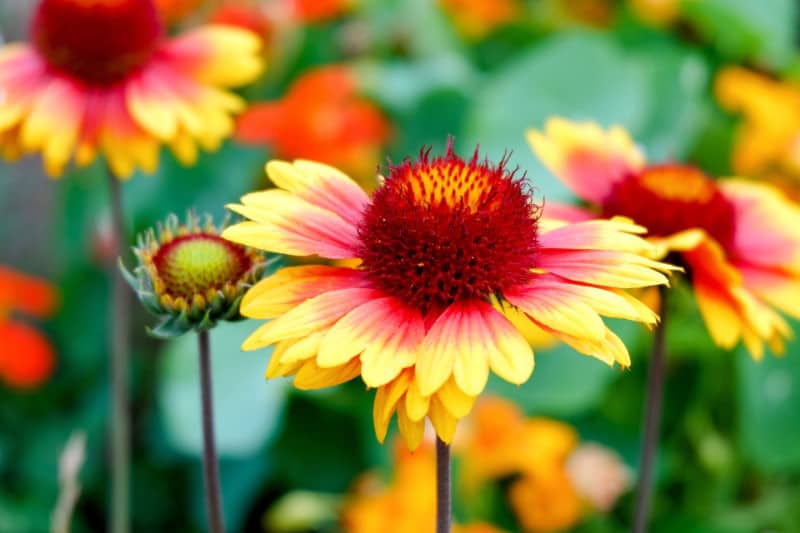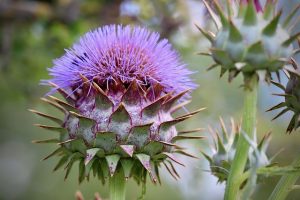If you’re looking for a beautiful, long-lasting flower to add to your garden, look no further than gaillardia! This hardy perennial is easy to grow and requires very little care, making it a great choice for beginners or busy gardeners. Keep reading to learn more about how to grow and care for Gaillardia (Blanket Flower).
Best Gaillardia Varieties
| Image | Name | Rating | Shop |
|---|---|---|---|
 | Outsidepride Gaillardia Pulchella | ||
 | Outsidepride Gaillardia Pulchella Bicolor | ||
 | Outsidepride Gaillardia Pulchella Red |
How to Grow and Care for Gaillardia (Blanket Flower)
Gaillardia Hardiness Zones
Gaillardia is a perennial that grows in zones 3-10. It flowers from midsummer to fall and forms clumps of upright stems with lance-shaped leaves. The flowers are usually red, yellow, or orange and can be up to 4 inches wide.
How Much Sun Do Gaillardia Need
Gaillardia needs at least six hours of full sun per day for best results, but they can tolerate light shade. However, if they are planted in too much shade, the plants will become leggy and produce fewer blooms.
Gaillardia Soil Requirements
When it comes to gaillardias soil requirements, this particular flower is not too demanding. So if you’re looking for a hardy plant that doesn’t need a lot of fussing over, gaillardia is a great flower to plant in an area where nothing else grows.
Gaillardia Soil pH
The ideal pH range for Gaillardia is 6.1 to 6.5, which is slightly acidic. If your soil pH falls outside of this range, you can adjust it by adding lime or sulfur to the soil. For best results, you can test your soil and make any necessary adjustments to keep it within the optimal pH range.
Gaillardia Plant Spacing
Gaillardias are a great addition to any garden, and they are especially beautiful when planted in masses. You should plant blanket flowers 2 to 3 feet apart, but if you want them to fill in more quickly, you can plant them closer and thin them out a bit once they’re established.
Gaillardia Temperature Requirements
Gaillardias love the heat, and they bloom in the summer when other flowers are starting to fade away. They do best when temperatures stay in the 80s or 90s, and if you want your gaillardia plants to thrive, make sure they get lots of sunlight and keep them well-watered.
Gaillardia Fertilizer Requirements
Gaillardias are light feeders and bloom profusely in poor soil. They don’t need any fertilizer, so it’s best to avoid adding any. If the soil is particularly poor or the plants look like they need a boost, you can give them a very small amount of organic fertilizer, such as compost or diluted fish emulsion. But be careful not to over-fertilize, as this can cause gaillardia to become leggy and produce fewer flowers.
Gaillardia Water Requirements
Gaillardia is an extremely drought tolerant plant that does not require much water. It can go for long periods without any rain at all and still thrive. So if you are looking for a low-maintenance garden plant that doesn’t need a lot of water, Gaillardia is a great choice for a rock or xeriscape garden.
Gaillardia Humidity Requirements
While Gaillardias (blanket flowers) are tolerant of a wide variety of growing conditions, they prefer hot, dry climates. In areas with high humidity levels, they may suffer from leaf spot and powdery mildew.
Gaillardia Pests
There are a few different types of pests that can affect gaillardia plants, but the most common are aphids. Aphids are small, sucking insects that can cause damage to the leaves and flowers of gaillardia plants. They can also spread disease between plants.
If you suspect that your gaillardia plant has aphids, you should take action to control them as soon as possible.
One way to control aphids is to encourage beneficial aphid predators to take up residence in your garden.
You can also try using organic insecticides such as neem oil or pyrethrin.
Gaillardia Diseases
Aster yellows is a plant virus that affects a wide variety of plants, including Gaillardia. This virus causes leaves to yellow and wilt, and can eventually lead to the death of the plant. There is no cure for aster yellows, so it’s important to remove any infected plants from your garden to prevent it from spreading.
















